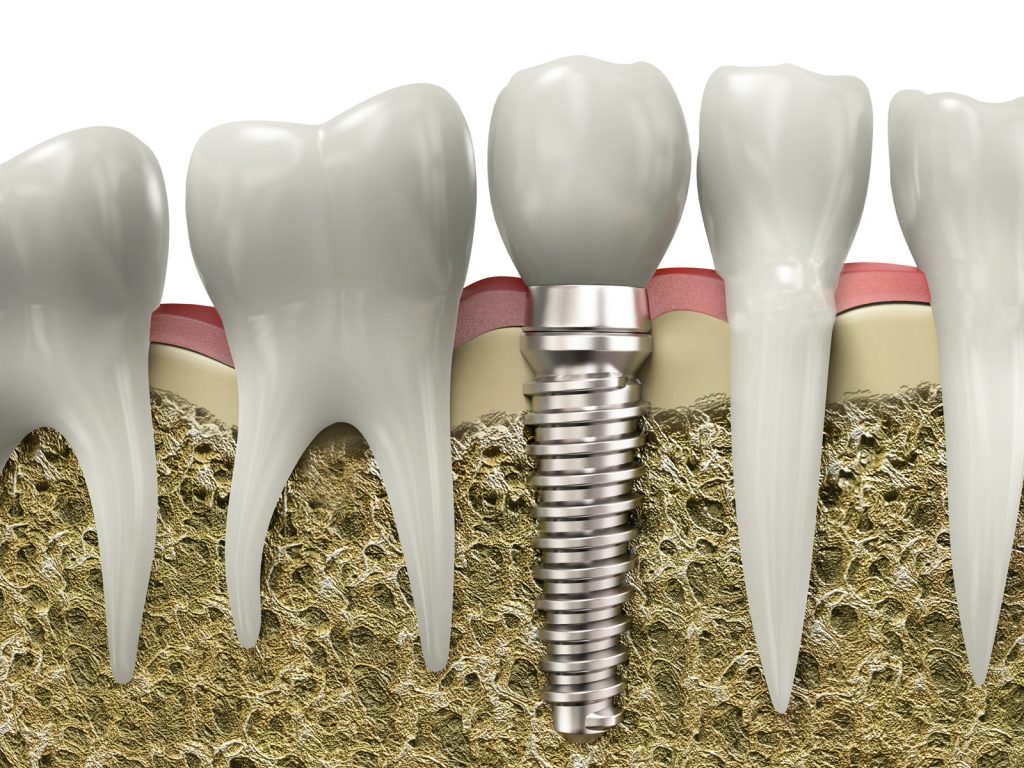Has your family dentist told you that you don’t have enough bone on your jaw for dental implants? Well, there are other options for you! First, it’s imperative to find a specialist with a lot of experience in dental implants. It may be trickier than your average implant procedure, but it is possible.
Can you get dental implants with bone loss? Yes! There are two main options: implants using existing bone and bone grafting.
Read on to learn more about implant options for upper and lower jaws using existing bone and about bone grafting and its different processes. Continue reading to learn about a great dental specialist near you!
Implants Using Existing Bone
This first option is to avoid grafting as much as possible for the fastest healing. Possibilities for using existing bone depend on where you are lacking bone and where you are missing teeth. The options are as follows.
Upper Jaw
- Zygomatic Implants: These implants are longer than traditional and anchor to the cheekbone. More invasive treatment than a standard dental implant but is less invasive than bone grafting.
- Pterygoid Implants: An implant placed in the molar region, where wisdom teeth used to be or usually are. This implant must be anchored to other implants in a bridge to be viable.
- Trans-Sinus Implants: Dental implants drilled through the sinus portion of the nose. Holding it in place is the hard “cortical” bone.
- Prosthetic Rebuilding: This uses ceramic porcelain to match the appearance of gums, to fill in the spaces lacking bone instead of grafting.
Lower Jaw
- Subperiosteal Implant: This isn’t practiced anymore. Dental implants are placed under the gum but above the jawbone.
Nerve Repositioning: This procedure replaces the back lower teeth if the bone is not enough to have an implant. Also, lack of space between the top and bottom teeth.
The goal of these procedures is to avoid bone grafting and avoid wearing dentures and shorten healing time.
Implants Using Bone Grafting
Implants need to be firmly anchored to the jawbone to stay secure for life. Bone grafting is a procedure of using transplanted bone to repair missing jawbone. The four main types of transplanted bone are:
- Autogenous: bone from your own body. This could be harvested from familiar places like the hips, chin, shins, and wisdom teeth area.
- Allograft: Bone from a human donor, and this is usually taken from cadaver bones. While it may seem creepy, this is perfectly safe and clean.
- Xenograft: This is the use of cow bone.
- Alloplast: Fake or artificial bone. This is only used in exceptional cases because this bone does not bond as well as natural bone.
By adding and growing your jawbone, implants can be safely secured. The more jawbone to attach to, the better the success rate of your implant taking. Check out dental implants near you if you think bone grafting might be right for you.
Expert Implant Dentist Near You
There are two main options for getting implants with bone loss, using existing bone or bone grafting. There are multiple implant types for each option; all should be discussed with your dentist! Using existing bone is preferred to avoid grafting for the fastest possible healing process.
If you are looking for dental implants in Red Deer, we may be just the place for you! At Gaetz Dental, we strive to provide the highest quality of care and compassion, and we can help you navigate the best treatment plan for your dental implant needs. If you need a dentist in Red Deer, give us a call today!

